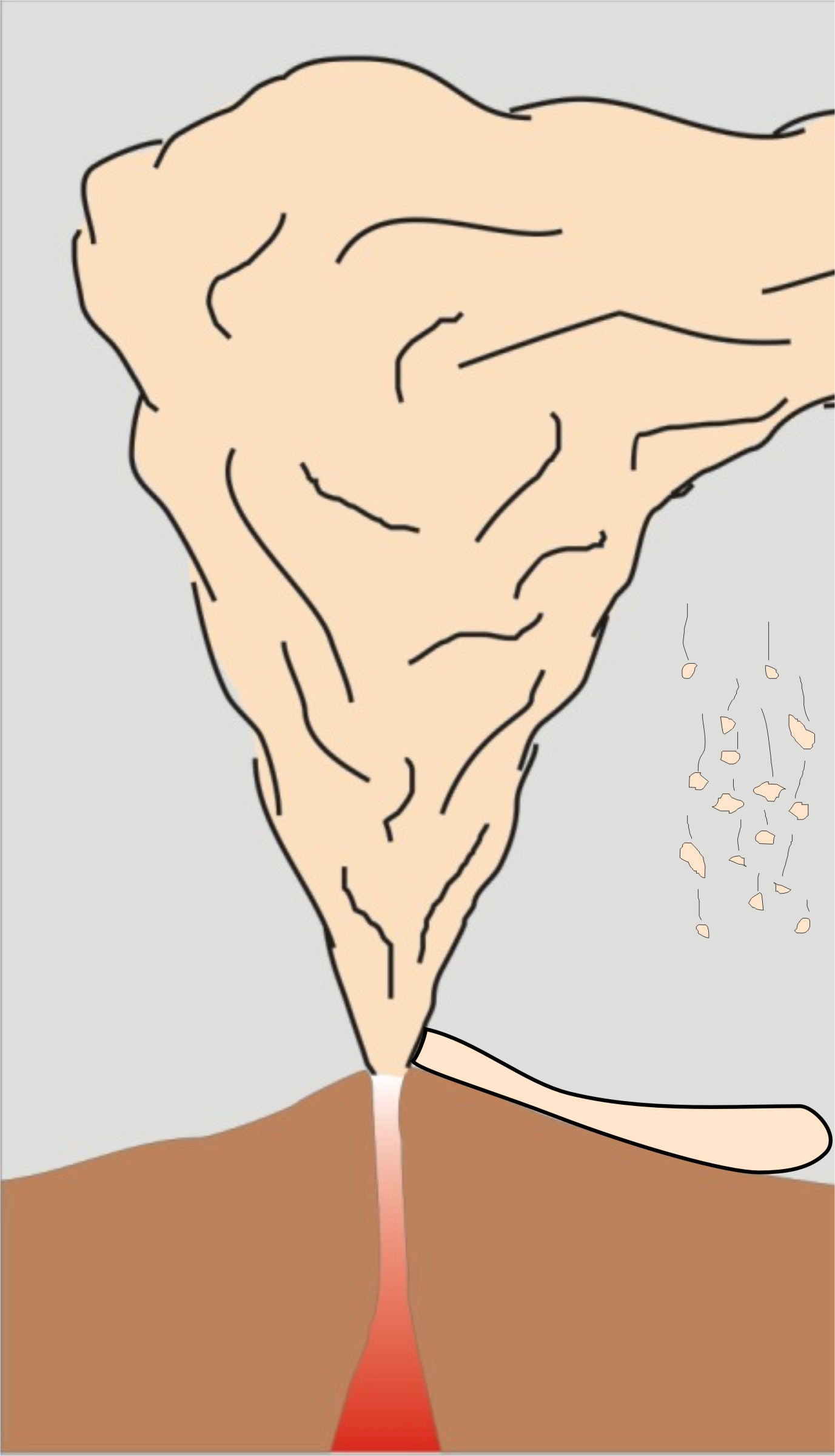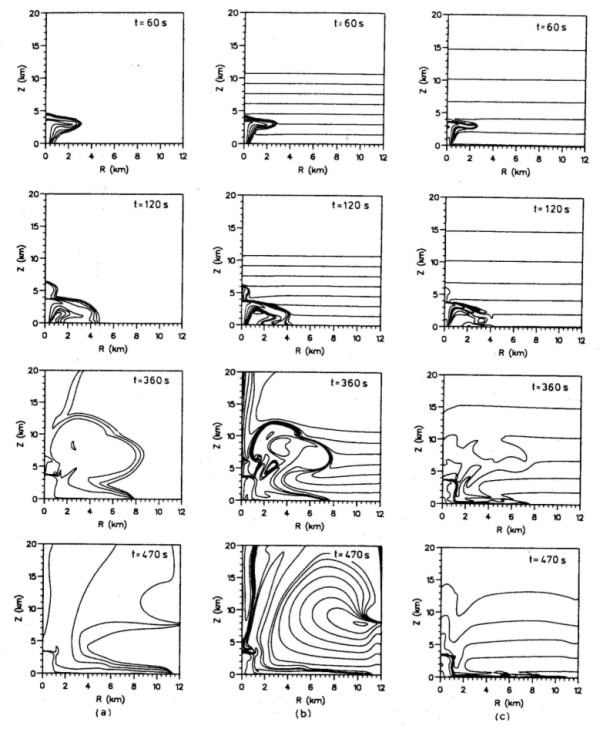
Non-buoyant
Regime
What about cases where not enough air is entrained into the column?
What happens when a column collapses?
A simple analogy is what happens when one stands in the backyard with a garden hose pointed up -- the hose fountains. In the case of a volcanic eruption, the volcano "fountains." but instead of sedning streams of water down the sides of the mountain, clouds of hot rock and gas, pyroclastic density currents (PDC's), are shed instead.
These currents can travel at speeds exceeding 50 m/s (Burgisser and Bergantz, 2002), and present substantial hazard to life and property. Though PDC's can be generated by dome collapse as well as column collaspe, this page will only discuss the latter. However, the discussion below is broadly applicable to either method of formation.
Surges versus Flows
PDC's can broadly be classified into two groups, pyroclastic surges and pyroclastic flows. The former are comprised of dense granular flow at the base and dilute flow at the top, whereas the latter are entirely dilute. Additionally, flows tend to follow topographic lows, such as valleys, whereas surges can go virtually anywhere -- in an eruption of Fisher Caldera, in the Aleutian arc, surges overtopped a 1500 m mountain range north of the caldera (Gardner, personal communication).




